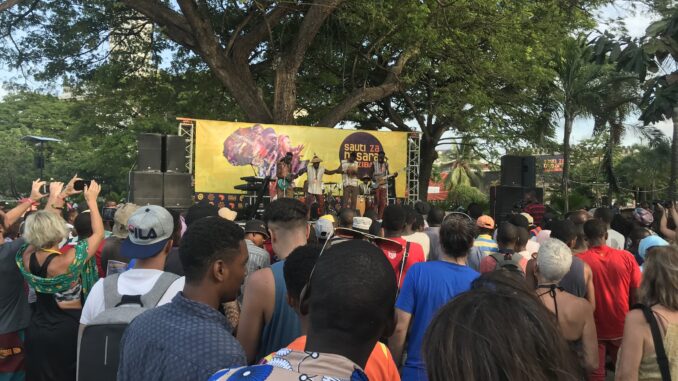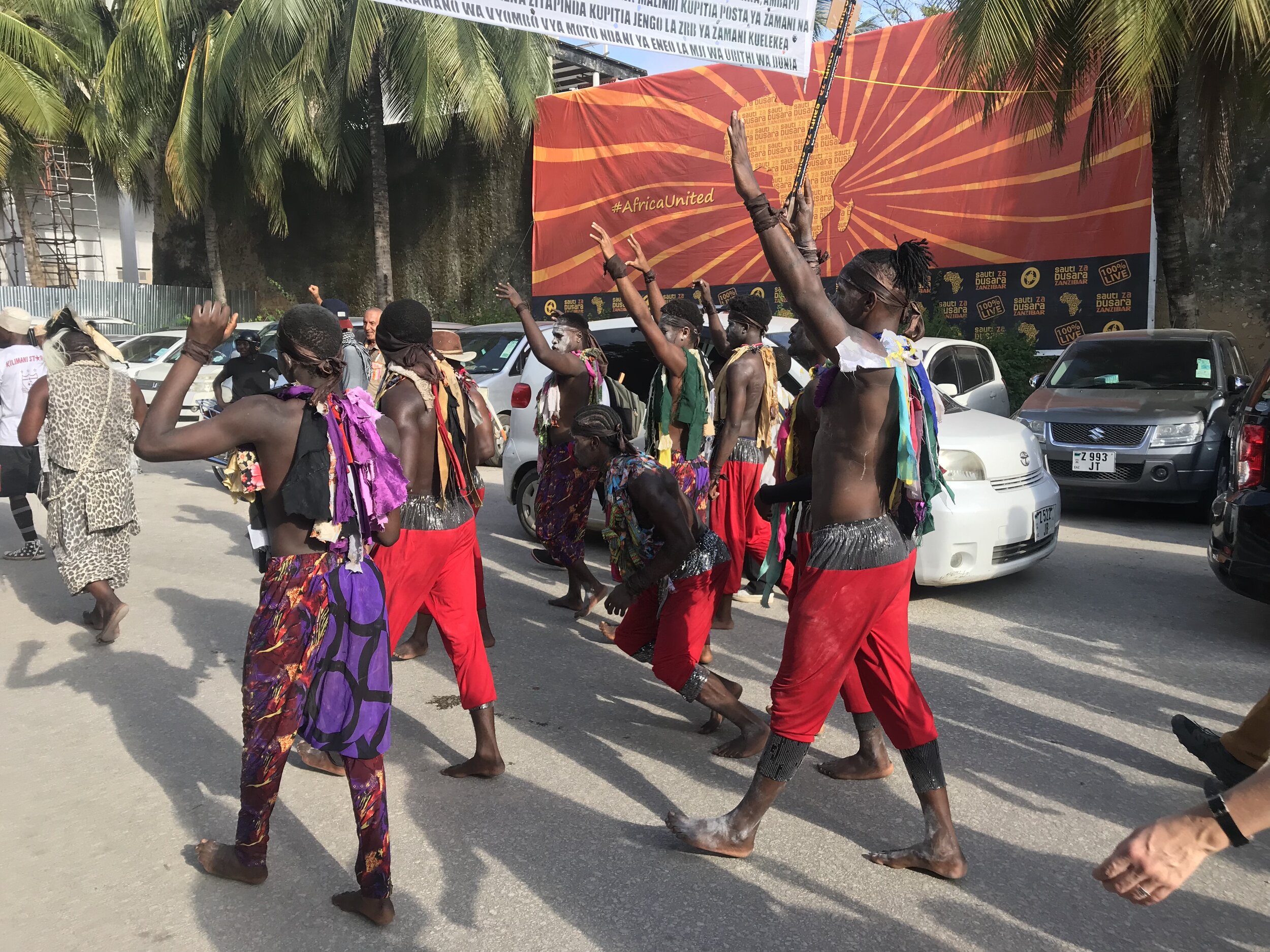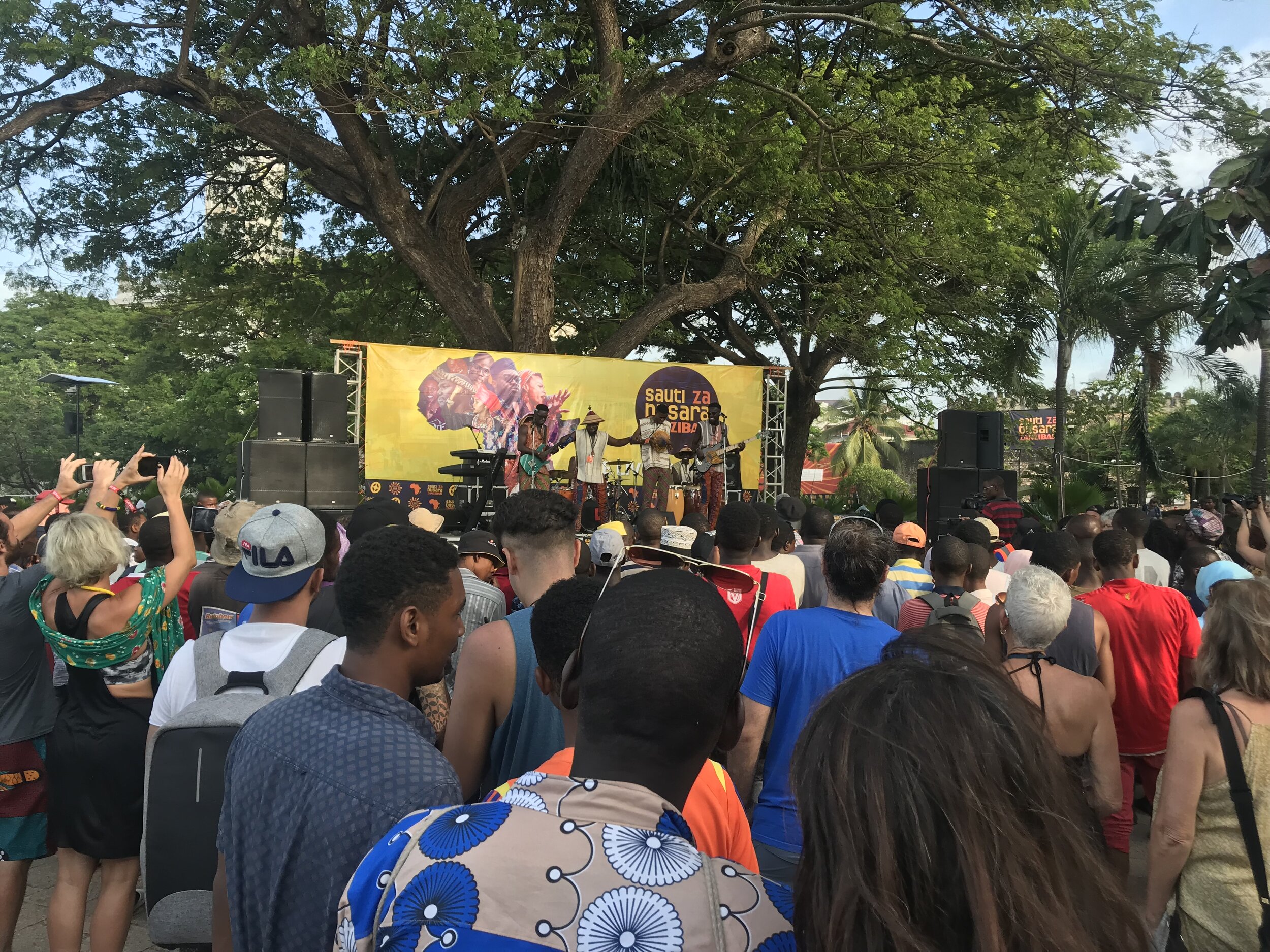
BY NELE WINTER

From the 13-16th February 2020 I had the chance to visit the festival Sauti za Busara in Zanzibar. Sauti za Busara is a festival that takes place every year and this year we celebrated the 17th edition of the festival. It’s one of the biggest festivals in East Africa with 44 shows over 4 days on 3 stages. This year over 27000 fans from around the world came to listen to musicians from all over Africa like Ambasa Mandela & the Last Tribe (Kenya), The Mafik (Tanzania), FRA! (Ghana), Tarajazz (Zanzibar) and Mehdi Qamoum (Morocco).

The festival started on Thursday with a carnival parade through the city. This parade featured performing art groups from Zanzibar as well as local schools, NGO’s and government institutions, who are united in the celebration of music. After that parade the concerts started with two free concerts at the Forodhani stage right next to the ocean. Forodhani garden is along the main seawalk of Stone Town and in the afternoon and especially in the evening, it is a place where people gather, talk and celebrate kids’ birthdays. In this setting people had the chance to listen to two concerts everyday without having to buy a ticket. These concerts took place before other concerts started in the festival arena of the Old Fort. Locals and tourist alike gathered around the stage to dance or just sit and enjoy the music. These concerts were an opportunity for locals who could not effort a ticket to still participate and enjoy the music.

Even before the festival started, I could feel it was getting busier and vibrant in Stone Town. During the festival you could hear music everywhere. Either a concert was taking place, bands were having a soundcheck, or local groups were playing in the streets. People from different parts of the world were coming together to celebrate the music and feel connected through the music.
Most of the bands I saw had African instruments or drums. All musicians had to sing and play their instruments live. This is a requirement by the festival management. This made the festival experience even more unique. Furthermore, most bands had some African elements in their music. For example, some bands from Zanzibar used the local Taarab style in their music, and merged it with modern music like the band Tarajazz, who combines Taarab with Jazz. This showed me that there are great musicians and festivals can happen who are not only inspired by the modern western music, but also with elements of African music. During the festival I could see where our project of digitizing Kenyan music and inspiring young musicians to use their own traditional elements in their songs would be going. This is a key part of our Leadership Center.
I was also able to take part in the side event of Movers & Shakers, which was a daily forum for professionals to network and exchange ideas. Topics during this event were focused on women in Music and how musicians can include African traditions in their music. It was also discussed which traditions are really African, as most of the “western” styles are also influenced by African music.

Furthermore, what I loved to see, was how local artists were featured. At least two of the bands I saw were graduates of the local school Dhow Countries Music Academy, who preserve and promote music heritage of Zanzibar. This school uses music as a tool for social change and youth empowerment.
All in all, Sauti za Busara was an amazing experience to celebrate the unity of Africa through music, and an opportunity to listen to great music from artists from all over Africa.
